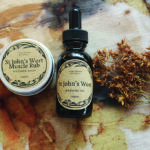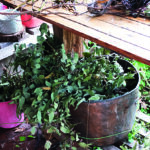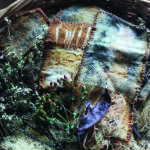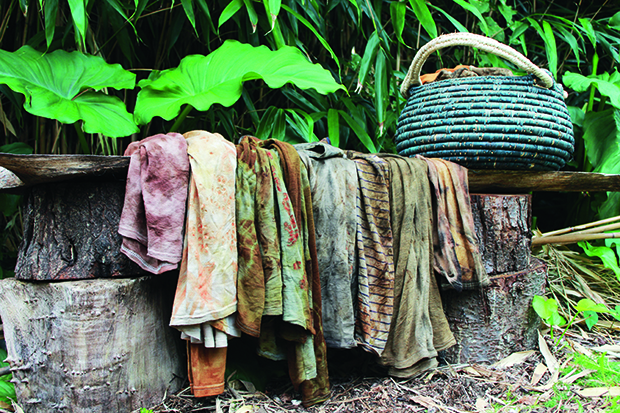The woman foraging her world from her Kāpiti Coast home
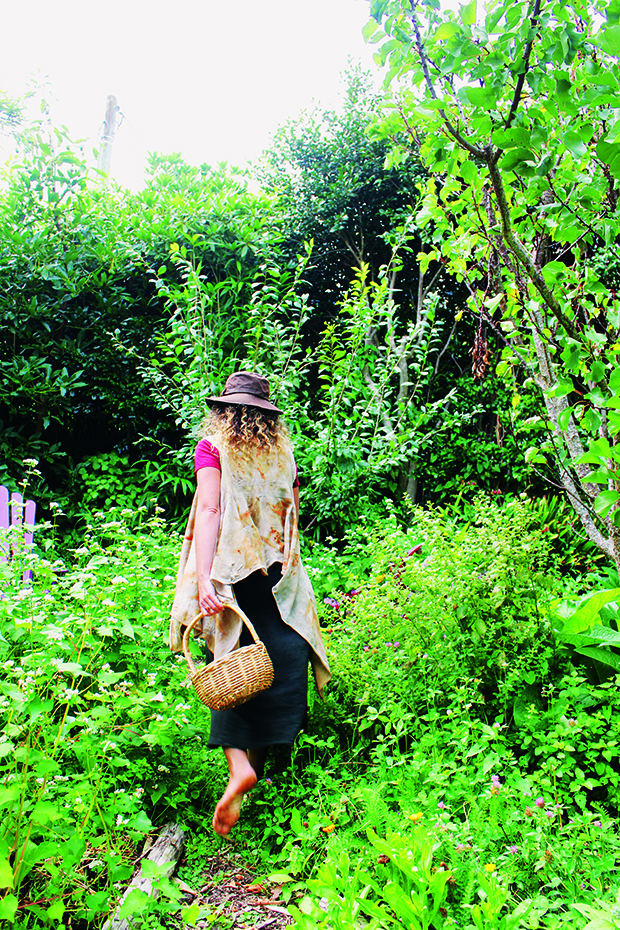
Collecting materials from the land is a way of life for one woman with a passion for sustainable, healthy living.
Words and images: Sheryn Dean
WHO: Felicity Joy
WHERE: Kāpiti Coast
WHAT: 0.13 hectares (1/3 acre) urban section – and the Kāpiti Coast landscape.
WEB: www.homegrownbotanica.co.nz
While living in Italy, Felicity would arise with the autumn sun to forage for portobello mushrooms and edibles in the forests and fields of the Swiss Alps. If it sounds romantic, that’s because it is. Felicity fell in love with wild herbs and flowers and began a lifelong passion for foraging.
Today, Felicity forages in backyards, marshes and native bush around her Kāpiti Coast home. Her urban section, part steep hill and part flood-prone valley, is an abundant wild garden, crammed with fruit trees, vegetables, flowers, herbs, a majestic old ginkgo tree, and weeds, which Felicity calls resources.
Foraged driftwood defines the garden boundaries, foraged mulch and seaweed feeds the soil microbiology, foraged bark and seed heads decorate her home, and foraged weeds provide the resources for her business – Homegrown Botanica.
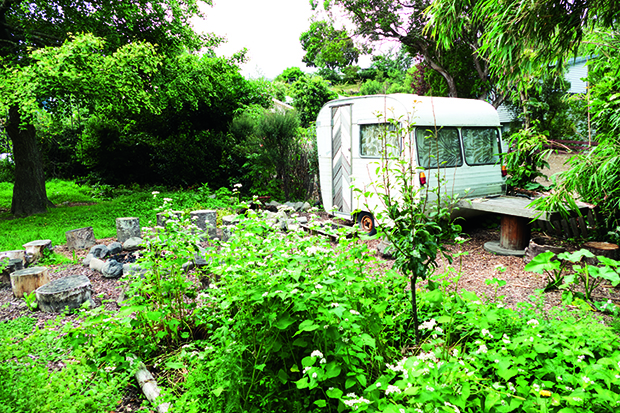
A caravan and fire circle provide the gathering point for friends, family and workshops on Felicity’s land.
A PASSION FOR PURITY
Felicity started her botanical journey by nibbling on plants in the Swiss Alps that “smelled tasty”. Her curiosity piqued, she began to research and experiment with what she collected. As her knowledge grew, so too did her passion for purity. Felicity didn’t just learn to identify plants, she also studied their role in the ecosystem along with the mythology and folklore that tell of their uses and benefits.
She brought her herbal knowledge back to New Zealand, where many of the European plants she’d studied were already established. Displaced from their native home to our lush climate, many of these plants grow so prolifically that we consider them invasive and worthless: fat hen, cleavers, onion weed, gorse flowers, chickweed.
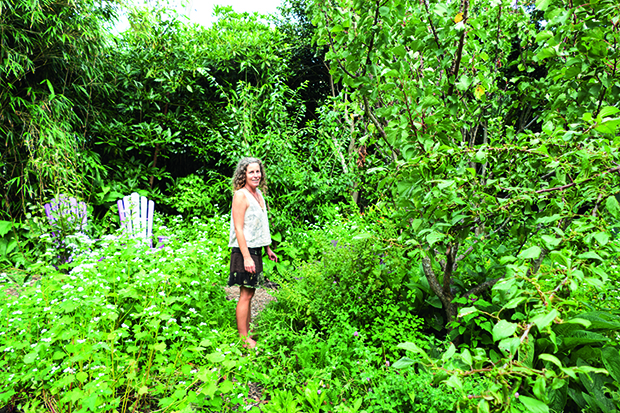
Felicity has turned her flood-prone urban section into an abundant wild garden. Fruit trees are nurtured by a luscious understory of plants, medicinal herbs and wild edibles
But it’s precisely this abundance that appeals to Felicity, allowing her to gather mindfully and sustainably while reducing the competition for native species.
Along with European weeds and native plants, Felicity also forages material from South American feijoa, Chinese magnolia and Australian gum trees. She uses folk herbalist techniques to slowly infuse organic oils to produce a range of botanical skin care products. The oils are strictly organic, the beeswax sourced locally and the packaging plastic free. As she says, there are “oodles of love in every jar”.
- Botanically infused organic skincare.
- A large copper pot under Felicity’s natural dyeing table contains windfallen gum leaves for eco printing, whilst various buckets contain tannin-rich leaves soaking in rainwater. Wild plants are foraged throughout the year to create various dye colours.
- Homemade pouches naturally dyed and eco-printed with lichens and wattle seedpods.
- A line up of naturally dyed and eco-printed clothes.
COLLECTING COLOURS
With her two girls, Gabriella (11) and Marina (9), Felicity regularly explores the local landscape to forage food to eat, ferment, brew, and materials to craft with. Her latest project is to forage plants for natural
dyes, which she uses to colour and texture fabric.
She chooses to reduce the impact of fast fashion by upcycling quality used clothes and scours second-hand shops and markets to source linen, merino, silk, wool and cotton garments.
Purple blackberries, brown oak leaves, turquoise gum seeds, silver dollar leaves, bright orange lichen, dock roots, St John’s wort flowers, rose leaves, the bright autumn colours of liquidambar, oak and maple leaves, kōwhai and harakeke (flax) seed pods are the paints that provide an endless array of texture and colour to decorate her garments.
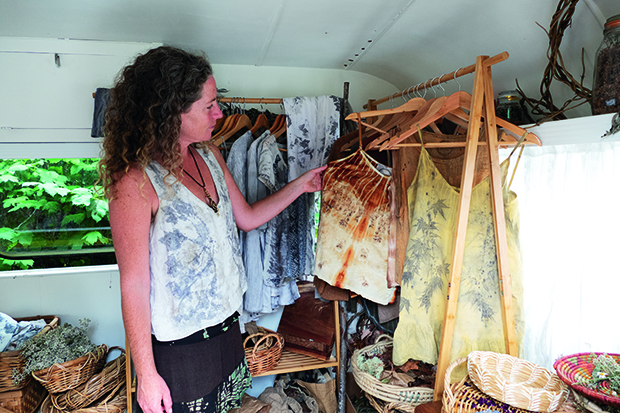
Garments from natural fibres are dyed with a range of foraged materials to create unique pieces of wearable art.
Felicity collects her materials, lays them out in a pattern on the fabric, rolls it into a bundle and ties it as tight as she can to get good contact. She then heats and steams the bundles in a dye pot for over two hours to extract the colouring tannins, which leaves unique shapes and patterns on the fabric.
She sometimes will use rust as a mordant to fix the colours to the fabric but has discovered not all fabrics need it.
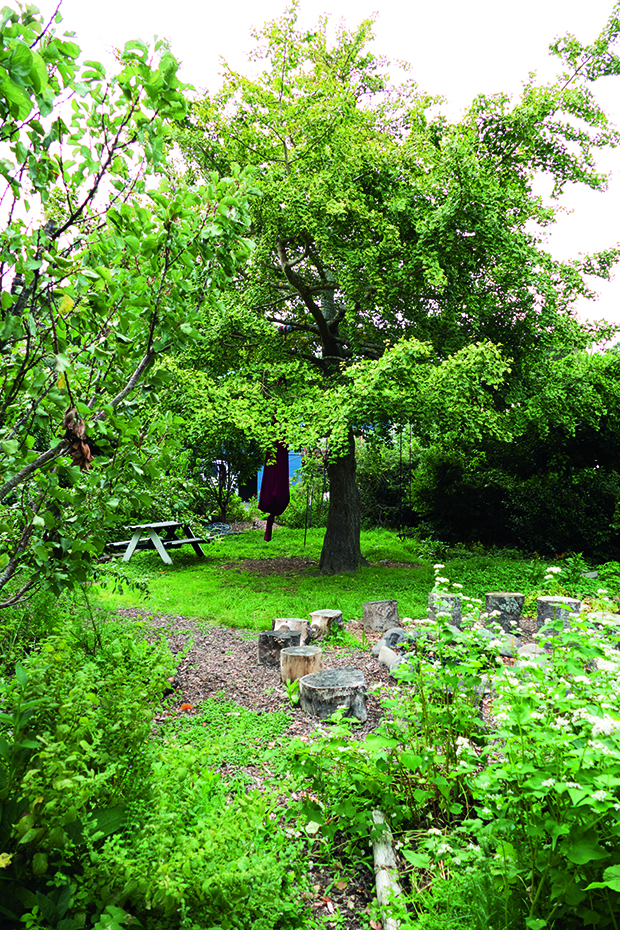
Felicity bought the property for the ginkgo tree, but was thankful a house came with it. Ginkgo are referred to as yin xing in Chinese medicine and an infusion of their autumn leaves is a purported tonic for the cardiovascular system, and an antioxidant and antidepressant. As well as providing a beautiful canopy of unusually-shaped leaves that turn gold in autumn, the tree hosts a silk ribbon for aerial acrobatics.
Besides, she likes how some prints become more vivid while background colours fade and mute during the ageing process. “Every time you wash the garments they look a little bit different. Parts you didn’t notice become prominent, like the texture from kōwhai pods. Which is what I really like. For me it is a living piece of art. It changes with me.”
The garments are then cured, washed, dried, ironed, and labelled – a slow, involved process that can take three to five days of hard work.
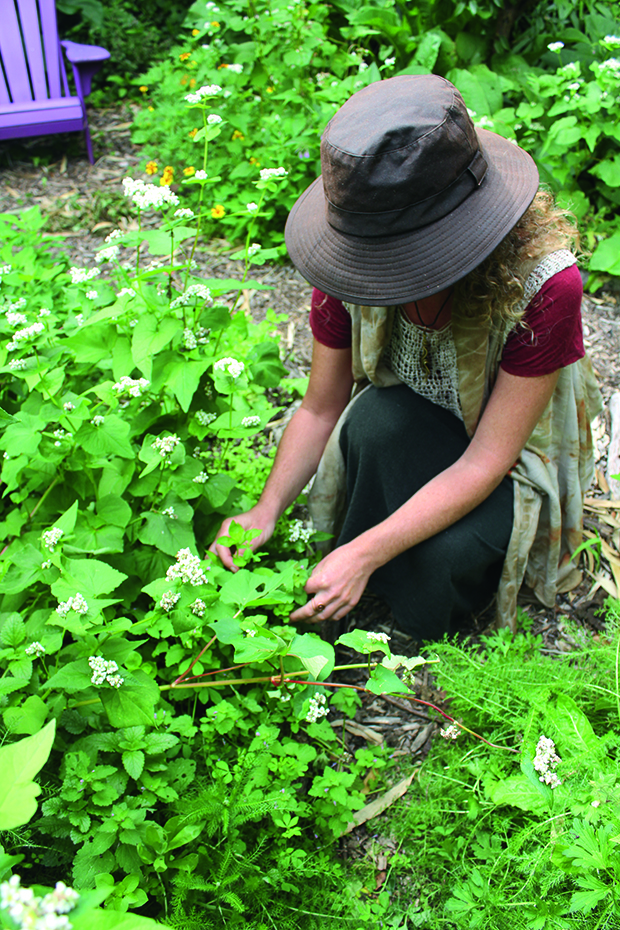
Buckwheat has been sown as a nitrogen-fixing ground cover following flooding. The flowers attract many beneficial insects to the garden.
Felicity is not just an expert at finding and identifying the plants; she knows the properties of each and the all-important practicalities of harvesting and cooking them. Her vast repertoire of knowledge sparked the interest of friends and their encouragement inspired her to host workshops on foraging. Felicity shares how to accurately identify edible plants throughout the season, how to recognise common imposters, their properties, use of remedies and most pertinently, how to prepare them for consumption. One of her most recent experiments – a harakeke, coffee and ice plant muffin.
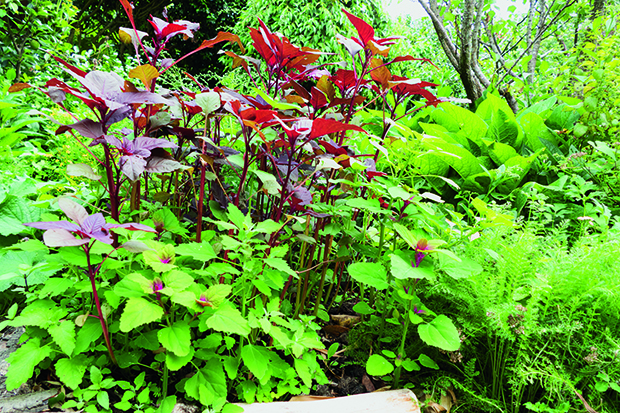
The understory of the young fruit trees is thickly planted with nutritious edibles including magenta spreen, red amaranth and yarrow which are all used in daily meals and medicinal preparations. Comfrey is planted to feed the soil and create a natural liquid fertiliser.
Graceful and welcoming, Felicity radiates a sense of peacefulness and purity that she seems to absorb from the natural world, the plants and trees that she’s come to love and know so well. There is a rare group of human beings that I’ve met over the years whom I call “the beautiful people”. Felicity is one of them in every single way.
Love this story? Subscribe now!
 This article first appeared in NZ Lifestyle Block Magazine.
This article first appeared in NZ Lifestyle Block Magazine.
